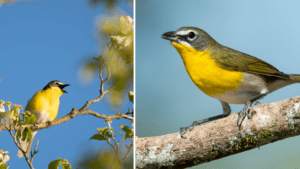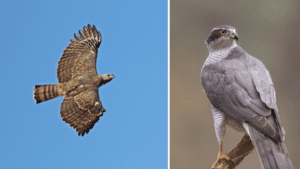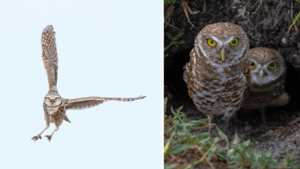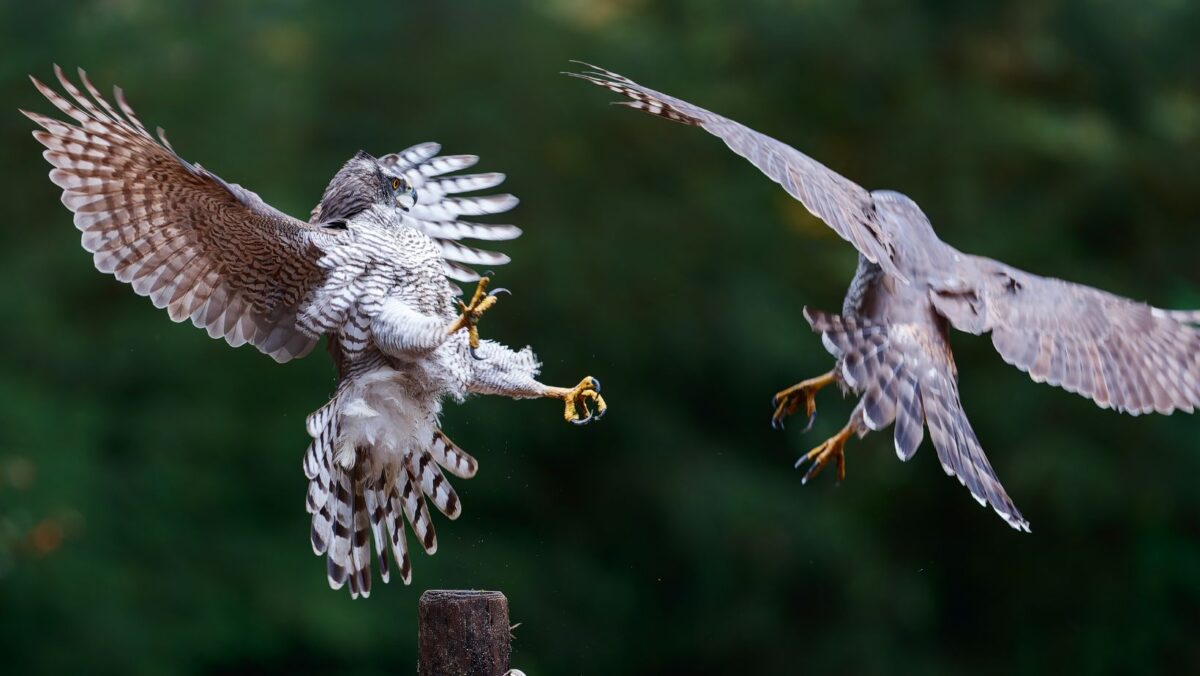
British Columbia is known for its rich biodiversity, with numerous bird species gracing the skies. However, amidst this vibrant avifauna, several species face critical endangerment, posing significant challenges to their survival. In a bid to safeguard these winged creatures, dedicated conservation efforts are underway across the province. The Conservation Data Centre assigns provincial Conservation Status Ranks that indicate the vulnerability of at-risk species and ecological communities in BC. This ranking determines whether each species and ecosystem is placed on the red, blue, or yellow list, facilitating the establishment of conservation priorities and goals. We will focus on the province’s most threatened birds – the red-listed species. The birds featured are all native BC species that are at serious risk of being lost in the province.
Now, let’s embark on a journey to learn more about these birds, the hurdles they encounter, and the landscapes that The Nature Trust of BC has conserved for their protection and revival.
The Yellow-breasted Chat (Icteria virens)
In the dry valleys of BC’s interior, a shy and solitary bird known as the yellow-breasted chat moves elusively and is often heard more frequently than seen. Their communication is predominantly through melodious songs, creating a symphony that resonates throughout their habitat. Males sing to each other to communicate territories and establish dominance. When females are present, they showcase their repertoire of 41 to 100 different song types, often mimicking other bird species.
Once, the yellow-breasted chat’s songs filled the air, but sadly, habitat loss, pesticides, and changes in land use have taken a toll on this songbird. Their greatest threat lies in increasing livestock use in previously suitable habitats, leading to damage through trampling and browsing. Thankfully, many organizations, including The Nature Trust of BC, are stepping in as a lifeline for the yellow-breasted chat, actively working to protect and restore their unique ecosystems at properties like Vaseux Lake. In the Okanagan-Similkameen region, over 480 acres have been protected between 1983 and 2005. This conservation effort benefits the yellow-breasted chat and provides a refuge for many other charismatic and threatened species, including the western skink, Lewis’s woodpecker, bighorn sheep and numerous endangered bats, lizards, and butterflies.
The Northern Goshawk (Accipiter gentilis laingi)
This formidable raptor, known for its remarkable hunting abilities, is capable of sustained horizontal speeds of over 60km/h in pursuit of prey. As impressive predators, they also have exceptional vision allowing them to spot prey from great distances and carry prey more than half their own weight. This aerial prowess enables the goshawk to hunt diverse species, including birds, small mammals, and even larger animals like hares. Beyond their hunting abilities, northern goshawks are monogamous and will often form long-term pair bonds. In British Columbia, they inhabit mature coniferous forests, but unfortunately, their populations are dwindling due to habitat loss caused by logging and human disturbance.
The threat of logging looms larger with shorter rotation times in forest harvests, leaving many forests insufficiently mature for the needs of the northern goshawk before they are logged. To combat this pressing issue, The Nature Trust of BC proactively protects large tracts of goshawk habitat. One example of our conservation success is the Meteor Lake Wetland-Bog property in the Upper Fraser River watershed. This area encompasses 230 hectares that were purchased and safeguarded in March 2022.
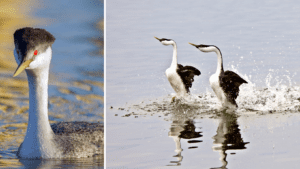
The Western Grebe (Aechmophorus occidentalis)
A large waterbird with powerful feet and a streamlined body, the western grebe is perfectly adapted for an aquatic lifestyle. These waterbirds typically nest in marshes and on the banks of lakes in BC and other parts of Canada before embarking on their winter migration to coastal areas as far south as Mexico. During this migration, they congregate in massive flocks, sometimes exceeding 10,000 individuals, and nest in colonies comprising thousands of pairs.
However, this can cause problems for this gregarious grebe. Large gatherings make them vulnerable to hazards like oil spills, fishery bycatch, and prey scarcity. Moreover, habitat degradation, invasive species, and fluctuating water levels have led to a significant decline in their wintering populations over the past few decades.
In response to these pressing challenges, The Nature Trust of BC has safeguarded critical western grebe habitats such as the 320-acre Shoal Creek Estuary. Located east of Port Neville, this estuary lies on the Pacific Flyway – a vital migration route extending from Alaska to the southern tip of South America. Each year, millions of birds make stopovers in freshwater wetlands and estuaries along the flyway, making their protection a high priority for conservation efforts, both locally and internationally.
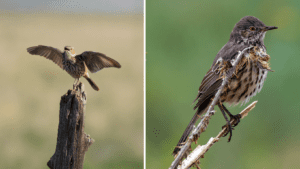
The Sage Thrasher (Oreoscoptes montanus)
The sage thrasher, a songbird uniquely adapted to the arid landscapes of British Columbia’s Interior, draws its name from its profound affinity to sagebrush habitats. A true virtuoso of the avian world, these incredible songsters have been known to sing for over 20 minutes without pause. Their resourcefulness shines through in their nest-building strategies within the high desert of the sagebrush steppe.
In a habitat characterized by extreme daily temperature fluctuations, sage thrashers demonstrate their ingenuity by orienting their nest entrances eastward. This orientation allows them to capture solar heat during cold mornings and provide shade to safeguard their eggs during hot afternoons. Despite their resourcefulness, sage thrashers face challenges primarily stemming from habitat degradation and loss. As sagebrush habitats are often converted to intensive agriculture, housing developments, and golf courses, the availability of suitable nesting grounds dwindles.
The Nature Trust of BC recognizes the urgency of protecting these vital habitats to ensure the sage thrasher’s continued existence. Through strategic land acquisitions and collaborative conservation efforts, The Nature Trust of BC aims to preserve and restore sagebrush habitats, exemplified by the Nighthawk Hill Grasslands located in the Similkameen Valley southeast of Keremeos and west of Osoyoos. Fundraising is underway, and with sufficient support, Nighthawk Hill Grasslands could become a sanctuary for the sage thrasher and many other wildlife species.
The Burrowing Owl (Athene cunicularia)
Nestled in shrub-steppe landscapes, the burrowing owl’s underground homes define their distinctive lifestyle. These ground-dwelling birds, celebrated for their comical charm, don’t make their burrows themselves but instead rely on mammals such as badgers, foxes and ground squirrels to excavate them. These burrows offer them unique protection from predators and harsh weather conditions. They can consume up to 7,000 insects and 1,800 rodents in one season and are intelligent hunters who attract dung beetles with strategically placed mammal dung.
Despite their cleverness, burrowing owls face significant threats like many other species residing in BC’s grasslands. Their habitat is restricted to the dry valley bottoms of the Southern Interior of BC, occupying less than one percent of the province’s area. Sadly, this already limited natural grassland is facing further diminishment due to expanding towns, intensive agriculture, and urbanization.
In the face of these challenges, The Nature Trust of BC, in conjunction with organizations like the Burrowing Owl Conservation Society, is working to protect these charismatic owls and foster their population resurgence. The establishment of protected areas, such as the White Lake Basin Biodiversity Ranch, is a perfect place for these birds to nest, thrive, and hopefully contribute to the recovery of their populations.
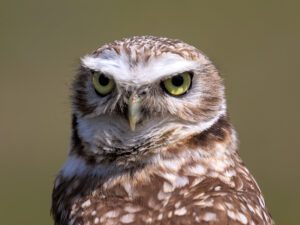
From the elusive, yellow-breasted chat to the enchanting melodies of the sage thrasher, each bird’s struggle underscores the importance of conservation efforts. The Nature Trust of British Columbia’s unwavering commitment to protecting vital habitats and restoring ecosystems serves as a beacon of hope for these red-listed birds and their survival.
As we celebrate the beauty and diversity of BC’s birdlife, it is imperative that we work together to preserve their habitats and promote sustainable practices. By recognizing their value and embracing our responsibility as stewards of the environment, we can ensure a brighter future for both birds and humans alike.
 Written by Shannon Marshall
Written by Shannon Marshall

